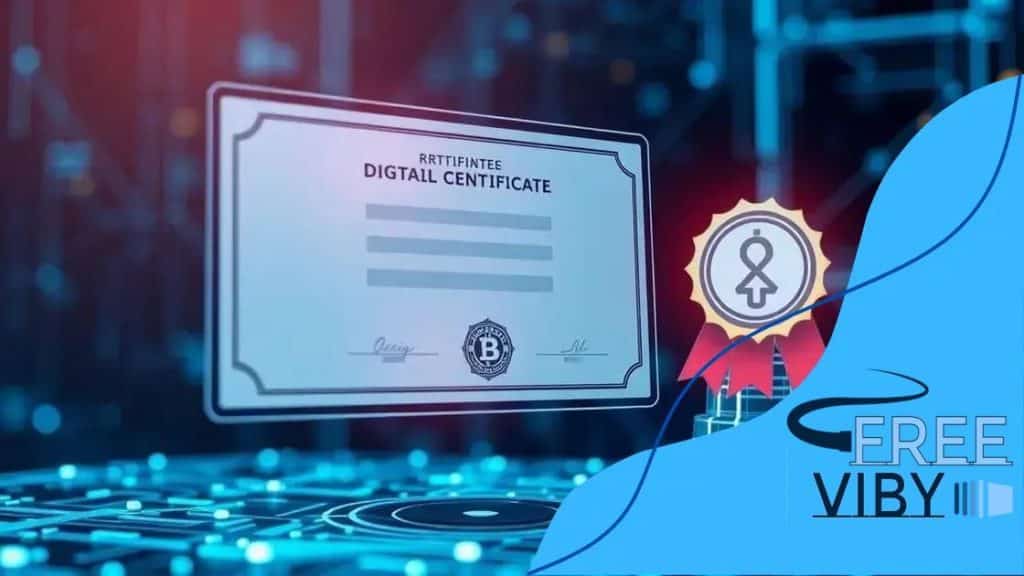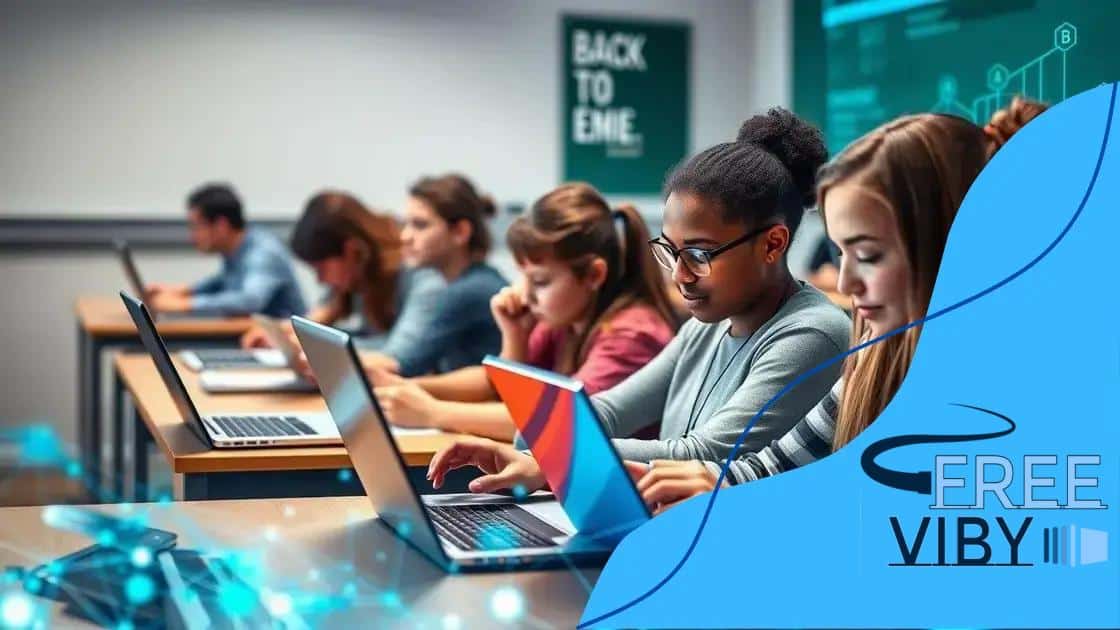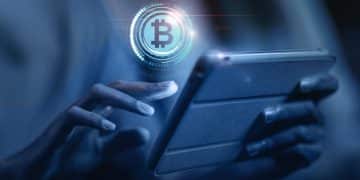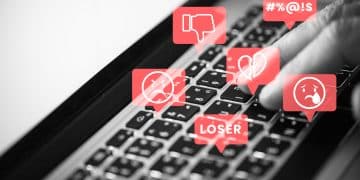Blockchain technology in education credential verification

Anúncios
Blockchain technology in education credential verification enhances security and efficiency by providing a decentralized, tamper-proof method for instantly validating academic qualifications, reducing fraud, and streamlining hiring processes.
Blockchain technology in education credential verification is changing the landscape of how institutions validate academic achievements. Imagine a world where your qualifications are secure and instantly verified; this is becoming a reality through blockchain!
Anúncios
Understanding blockchain technology
Understanding blockchain technology is essential for grasping its impact on fields like education. At its core, blockchain is a decentralized digital ledger that records transactions across multiple computers. This ensures that the recorded information is secure, transparent, and immutable, meaning it cannot be altered without consensus from the network.
When we talk about blockchain in education, it’s important to recognize how it enhances credential verification. The technology creates a unique digital fingerprint for each credential, allowing institutions and employers to verify qualifications quickly and accurately.
Key Features of Blockchain
Some vital features of blockchain technology include:
Anúncios
- Decentralization: No single entity controls the entire chain, which increases security.
- Transparency: Transactions are visible to all participants, fostering trust.
- Immutability: Once recorded, data cannot be changed, preventing fraud.
- Smart contracts: These automated contracts execute actions based on predetermined conditions.
By utilizing blockchain technology, educational institutions can create a more efficient verification process, reducing the potential for fraud and mistakes. Imagine a world where potential employers can instantly verify a candidate’s degrees and certifications. This not only speeds up hiring processes but also builds trust between potential employers and employees.
Moreover, the integration of blockchain technology into education can lead to a more standardized method of credentialing across borders. This means that qualifications obtained in one country can be easily verified and recognized in another, making international career mobility more feasible.
As we continue to see advancements in technology, blockchain stands out as a promising solution that can bridge gaps in the current education system. It’s a tremendous opportunity for students, educators, and employers alike to embrace a brighter future.
The role of blockchain in credential verification
The role of blockchain in credential verification is pivotal in ensuring the authenticity of educational qualifications. With traditional methods, verifying a degree or certification can be time-consuming and prone to errors. However, blockchain offers a streamlined solution by securely recording and sharing credentials.
This technology keeps records in a decentralized manner. Each qualification is encrypted and linked to a unique identifier. Because of this, institutions can verify credentials instantly, significantly speeding up the hiring process. Imagine applying for a job and your potential employer being able to confirm your qualifications in minutes instead of weeks.
Benefits of Blockchain in Credential Verification
There are several notable benefits of using blockchain for this purpose:
- Enhanced Security: Data is protected by cryptographic algorithms, reducing the risk of counterfeit degrees.
- Increased Transparency: Candidates and employers can access records openly, promoting trust.
- Cost Efficiency: Reducing reliance on middlemen saves time and money during the verification process.
- Ease of Access: Students can securely share their credentials with potential employers via blockchain.
Employers can easily navigate the complex world of educational verification. They no longer have to rely on slow, outdated methods or worry about authenticity. As more institutions adopt blockchain technology, the industry is moving toward a standardization that enhances reliability across the board. This shift not only benefits graduates but also creates a more trustworthy hiring landscape.
In a world where many universities offer online courses and remote learning options, verification becomes even more critical. Blockchain ensures that regardless of how or where individuals earn their degrees, these qualifications can be verified instantly and accurately.
As this technology evolves, the role of blockchain in credential verification will undoubtedly become more prominent, paving the way for a future where education credentials are universally recognized and trusted.
Benefits of using blockchain in education

The benefits of using blockchain in education are numerous and impactful. As educational systems evolve, incorporating blockchain technology can enhance how institutions operate and how students learn. One of the main advantages is the improvement in student data security. With traditional systems, student records can be lost or tampered with, but blockchain provides a secure, unchangeable ledger.
This security means that students can have confidence in the integrity of their records. Additionally, blockchain enables seamless sharing of educational achievements. Institutions can easily verify qualifications without relying on third-party verification services, which often slow down the process.
Key Advantages of Blockchain in Education
Here are some significant advantages of integrating blockchain in educational settings:
- Enhanced Credential Verification: Employers can instantly verify qualifications, decreasing the time for hiring processes.
- Reduced Fraud: By making credentials tamper-proof, blockchain dramatically lowers the risk of fake degrees.
- Student Empowerment: Learners can manage their credentials, allowing them to share their achievements directly with employers.
- Cost Efficiency: By eliminating intermediaries for verification, fewer resources are needed, potentially lowering tuition costs.
As more institutions explore the implementation of blockchain technology, the education landscape may shift towards more efficient methods of verifying and sharing educational achievements. This also leads to increased collaboration between schools, students, and potential employers.
Another benefit of blockchain is its ability to enhance learning experiences. By providing access to a global network of resources and courses, students can expand their skillsets beyond traditional classroom settings. Whether it’s through digital certifications or access to a diverse range of educational materials, blockchain can foster a more personalized and flexible learning environment.
Overall, the adoption of blockchain in education can lead to significant improvements in security, transparency, and efficiency, creating a better experience for students and institutions alike.
Challenges faced in implementation
Implementing blockchain technology in education comes with its own set of challenges. While the benefits are clear, schools and universities must navigate several obstacles to adopt this innovative approach effectively. One significant challenge is the need for a robust technical infrastructure.
Many institutions may lack the necessary hardware or software to support blockchain systems. This gap can result in significant costs, as schools must invest in new technologies and training for staff to ensure successful integration.
Key Challenges in Implementation
Some of the main challenges include:
- Cost of Adoption: Setting up blockchain systems can be expensive due to technology investment and staff training.
- Lack of Awareness: Many educators and administrators may not fully understand blockchain technology, which hampers effective implementation.
- Regulatory Issues: Legal frameworks and regulations surrounding data privacy and security must be considered, as they can impact blockchain use.
- Interoperability: Integrating blockchain with existing systems can be complex and require specialized expertise.
Another challenge is ensuring data privacy and security. While blockchain is known for its secure nature, concerns about student data confidentiality still exist. Institutions must carefully consider how to protect sensitive information while utilizing blockchain’s transparent nature.
Moreover, the educational sector often has a conservative approach to change. Many institutions are resistant to adopting new technologies due to the fear of disrupting established processes. This hesitance can delay or even prevent the many advantages of adopting blockchain from being fully realized.
As these challenges are addressed, it is crucial for schools to collaborate with experts in technology and data management. This collaboration can help navigate the complexities of implementation, making the transition smoother for all stakeholders involved.
Future trends in blockchain education
The future trends in blockchain education are promising and indicate a shift towards more innovative learning experiences. As the adoption of blockchain technology increases, educational institutions are starting to realize its potential benefits. One significant trend is the growing emphasis on digital credentials that can be easily verified.
Traditional degrees may soon be supplemented or replaced by blockchain-based records. This change allows for instant verification of qualifications, making the hiring process smoother for employers. Schools may adopt systems that enable students to showcase their skills and achievements through secure digital portfolios.
Emerging Blockchain Applications
Several key applications of blockchain are likely to emerge in the education sector:
- Micro-credentials: These short courses can help students gain specific skills, and their completion can be recorded on the blockchain for easy verification.
- Transparent Financial Aid: Blockchain can track the flow of funds, ensuring transparency in scholarships and grants.
- Decentralized Learning Platforms: Collaborative online environments may flourish, allowing educators and students to engage without centralized institutions controlling the process.
- Global Education Standards: As blockchain facilitates cross-border recognition of credentials, a uniform educational standard could develop.
Another trend is the increased focus on lifelong learning. With rapidly changing job markets, ongoing education is essential. Blockchain can support this by keeping a comprehensive record of learners’ credentials as they continuously update their skills. This verified pathway can illustrate ongoing professional development.
The integration of blockchain with other technologies, like artificial intelligence and the Internet of Things (IoT), will further enhance learning experiences. Imagine classrooms that adapt to individual students’ needs using data securely stored on a blockchain. This allows for tailored learning that adjusts based on performance and preferences.
As more institutions explore these advancements, the landscape of education will continue to evolve. With the advantages of transparency, security, and efficiency, blockchain in education holds the key to a more accessible and effective learning environment for future generations.
FAQ – Frequently Asked Questions about Blockchain Technology in Education
What is blockchain technology in education?
Blockchain technology in education is a decentralized method for recording and verifying credentials securely, ensuring data integrity.
How does blockchain enhance credential verification?
It allows for instant and tamper-proof verification of qualifications, reducing the time needed for employers to verify candidates.
What are the main benefits of using blockchain in education?
The main benefits include improved security, reduced fraud, faster verification processes, and global recognition of qualifications.
What challenges are faced in implementing blockchain in educational institutions?
Challenges include the cost of technology, the need for staff training, data privacy concerns, and integrating with existing systems.






